THE LATEST FROM THE MARYLAND DEPARTMENT OF THE ENVIRONMENT


A Green 2019 in Review
Our state witnessed steady progress on the environmental front in 2019, with key milestones and initiatives to protect and restore the health and well-being of all Marylanders. Highlights included regional environmental collaborations for global and local success, coupled with state actions that serve as national examples of bipartisan, balanced solutions.
Climate Change
Bold and collaborative action is needed to confront the climate crisis, and Maryland continues to be a shining example for other states and countries.
In December, Governor Hogan unveiled details of bold and innovative legislation to set Maryland on a path to cleaner, smarter, cheaper energy with zero carbon emissions and 100% clean electricity by 2040 through the Clean and Renewable Energy Standard (CARES). The governor’s historic push for clean, homegrown energy is at the heart of our comprehensive climate strategy and serves as a model for other states looking to green and grow their economies.
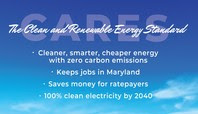
CARES would increase the strategic use of zero- and low-carbon clean and renewable energy sources. In August, Governor Hogan signed an executive order establishing a task force to develop consensus based recommendations on the siting of new solar and wind energy projects in the state. Later that month, MDE denied a wetlands and waterways application for the proposed Shugart Valley solar project and determined that the proposed Ripley Road solar project does not satisfy water quality-related conditions in the Certificate of Public Convenience and Necessity issued by the Public Service Commission. While Maryland strongly supports the increased use of clean and renewable energy sources, these two projects, as proposed, would have harmed high-quality waters in Charles County and threatened restoration progress in the Chesapeake Bay watershed. This would have been an unacceptable trade-off for the environmental benefits of clean energy.
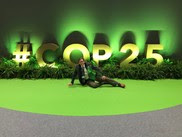
The world is also watching our state’s work for cleaner transportation that meets the needs of all Marylanders, from clean cars and trucks to reduced traffic and increased public transit. Maryland remains very engaged in the multi-state Transportation and Climate Initiative and will be most interested in comments from citizens and stakeholders over the coming months to determine potential next steps.
Clean Water and the Chesapeake Bay
Maryland continues to make big strides for cleaner water and a restored Chesapeake Bay. In August, Maryland submitted its comprehensive plan for the next steps in Bay restoration. We developed the Phase III Watershed Implementation Plan using extensive engagement with local governments and the public to identify aggressive but achievable pollution reduction strategies that balance responsibilities among wastewater treatment plants, urban stormwater runoff, septic systems, farms and other key sectors and problem solvers. The plan is also the first to factor in the potential impacts of climate change. In addition, a first-ever holistic plan is being developed among all of the Chesapeake Bay watershed states and EPA specifically to reduce harmful effects of the Conowingo Dam on water quality in the lower Susquehanna River and the Bay.
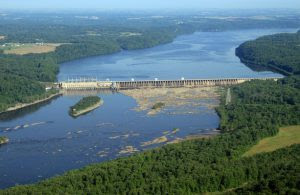
Governor Hogan continued to fight for federal funding for the Bay, resulting in great news from Washington that Congressional leaders not only restored funding but boosted it from $73 million to $85 million. The Hogan administration has committed an historic $5 billion toward wide-ranging bay initiatives — far more than any administration in Maryland history.
Clean Air
The quality of the air that Marylanders breathe has improved significantly in recent years, but there is still much more work to do. A lot of the problem comes into Maryland from upwind states. We continue to press our case that the U.S. Environmental Protection Agency should do more to require those upwind states to reduce their pollution. We have also petitioned the regional Ozone Transport Commission to make recommendations to EPA for additional air pollution controls in upwind states.
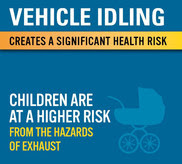
The Idle Free program fits closely with Maryland’s plan for investing more than $75 million in settlement money from the Volkswagen “defeat devices” case in transportation strategies and projects to improve air quality. Under that plan, finalized in 2019, MDE has approved nearly $2.5 million in funding for electric and alternative fuel school buses.
Sustainability and Public Health
In October, EPA and the University of Maryland Environmental Finance Center hosted a multi-state gathering of officials, experts, and advocates to rally support for reducing the risks of lead in housing, water, soil, and other sources. Later in October, MDE and the Maryland Department of Health reported on progress on universal blood lead level testing and continued declines in lead poisoning — a nearly 14% drop from last year.
Enforcement continued to play a critical role in 2019. The number of enforcement actions taken by MDE in the fiscal year that ended in June increased by 15 percent compared to the previous fiscal year. The department’s enforcement and compliance efforts have helped lead to cleaner water and air and reduced exposure to hazardous materials for Maryland residents.
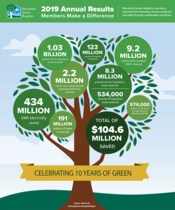
Looking Ahead to 2020
MDE will strive for continuous improvement in customer service and environmental results locally and regionally. One example will be our robust commitment to radon awareness month in January. We look forward to working in January and the following months with the General Assembly on the Governor’s CARES legislation and MDE’s Water Infrastructure Emergency Reserve bill to increase dam safety and climate resiliency. The year will also include important and constructive discussions with local legislators, policymakers, and citizens from around the state on our comprehensive greenhouse gas reduction plan. MDE is also focused on implementation of our Chesapeake Bay and Conowingo Dam initiatives, working with agriculture, stormwater districts, and communities on our innovative technology and green infrastructure strategies. 2020 will be an important year to embrace partnerships for reducing, reusing, and recycling waste in the spirit of sustainable materials management and reducing our carbon footprint.
Air, Land, Water – Did You Know?
Recycling as Art

Rethink Recycling challenges Maryland high school students to use recycled materials to create artistic and innovative sculptures. This year, 66 entries from 20 high schools in 14 counties across the state were on display.
Jorja Rodgers from Century High School in Carroll County was the Grand Prize winner for her shadow sculpture, “Silhouette of Selena.” Rodgers’ artwork was made using plastic and paper that created a shadow image on a backdrop. Rodgers received an Xbox One X Star Wars edition console bundle and extra controller for her efforts.
More Photos
Treecycling

Have an Idea?

Email the Editor
We’re always looking for ways to make eMDE even better. Here’s a chance to tell us what you think. Have some thoughts on what we can do better or things you’d like to see more of? An idea for a specific story? We want to hear from you. Contact us!
MDE’s Mission
Our mission is to protect and restore the quality of Maryland’s air, water, and land resources, while fostering smart growth, a thriving and sustainable economy and healthy communities.

